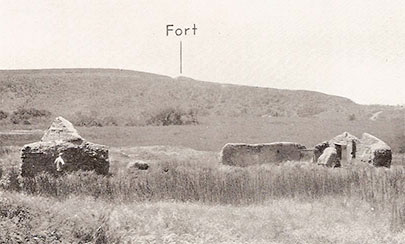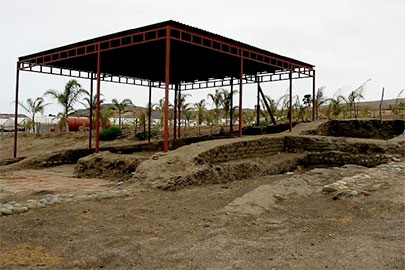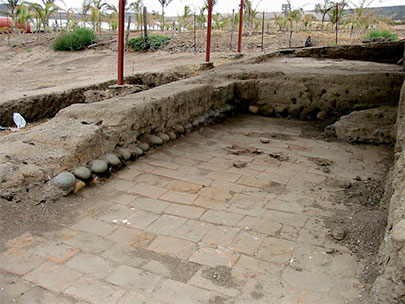 |  |
By David Kier

Baja California is home to the first eighteen Spanish California missions as well as nine more added while the Franciscan padres were busy adding missions in Alta California.
Once the Franciscan President, Padre Junípero Serra, saw the land from San Diego and beyond he was easily convinced to turn over all of Baja California to the Dominican Order within five years. The Dominicans had pleaded for some responsibility in the California mission program. They would get more than they bargained for!
The Franciscans had been operating all the (Baja) California missions since 1768 when they came to replace the banished Jesuit priests. They, along with all their brothers in New Spain, were forced from the land they had toiled so long and hard in to convert the natives into friendly Spanish subjects. In the following year, Serra and others were sent north of the peninsula to occupy the ports of San Diego and Monterey when it was feared by Spain that Russia could soon take these ports and jeopardize the safety of the Manila Galleon on its return trip to Acapulco.

The Jesuit founded Baja California missions were in a state of decline. Diseases introduced by Spanish soldiers and civilians over the past 72 years and earlier had taken their toll on the southern and central Baja California Indians. The change of living conditions and lifestyle, instigated by the missionaries, also was counter-productive to population growth.
In May 1773, all the peninsula of Baja California was transferred to twenty-six members of the Dominican Order of Preachers. They had responsibility for the thirteen Jesuit founded missions still open, the one Franciscan founded mission of San Fernando de Velicatá, and 250 miles of unconverted land from Velicatá to nearly San Diego in which to establish their own missions with fresh souls they hoped to “save.” One hundred Dominicans would come to Baja California over the following seventy years.
Five missions were founded by the Dominicans in northern Baja California along El Camino Real, the Royal Road, which in California began at Loreto. Then, the Dominicans added two “mountain missions” to convert the natives in the center of northern Baja California. These were Mission San Pedro Mártir in 1794 and Mission Santa Catalina in 1797. Thirteen years later, Mexico declared its independence from Spain and war followed for the next eleven years. The missions are eventually cut off from receiving supplies and financing. The padres had to fend for themselves to continue their religious activities and goals of civilizing the natives. They would learn to be profitable if they were to survive!

Many of the Dominicans returned to Spain by the end of 1822 when the Californias pledged loyalty to the new Mexican Empire. A few priests remained, including Padre Felix Caballero. Caballero arrived in northern Baja California in 1814 and was assigned to Mission San Miguel the following year to replace Padre Tomás de Ahumada. Ahumada had moved the mission of San Miguel (located in today’s town of La Misión on Highway One) shortly after he arrived there in 1809, after floods had carried off the farming fields.
The new mission location was eight miles north, at a site called El Descanso. The mission was now known as San Miguel la Nueva (New San Miguel) and existed from 1810 on to an unrecorded year when Ahumada returned to the old San Miguel site (now called Misión Vieja). It seems likely that both locations remained in operation as a dual-mission or mission-visita relationship under the stewardship of one priest. They were not two unique missions.
Padre Felix Caballero was assigned to Mission San Miguel in 1815. However, no records indicate if he was at the old or new (Descanso) location for the next 15 years. In 1830, we do learn that Caballero had a new church built in the El Descanso valley and he would call it a “mission.” This information was preserved by Manuel Clemente Rojo in 1879 who copied documents in La Paz before they were destroyed during a rebellion there.

In 1834, both El Descanso and San Miguel missions would close as Padre Caballero built a new mission to the east and named it Nuestra Señora de Guadalupe. Both El Descanso and Guadalupe were built after the birth of Mexico as a nation and thus are not considered as official Spanish missions but instead the actions of a lone Dominican priest. A priest whose neophytes rose up against him and chased him out of the region. Caballero escaped to Mission San Ignacio in 1840 and had arranged for his large herd of cattle to be transferred from Guadalupe to San Ignacio. Before that was accomplished, Caballero died suddenly after drinking his morning chocolate. Mexicans who moved into Baja California had become increasingly suspect of the motives of the few remaining Dominicans. That some priests had acquired vast amounts of land, cattle, and “free” labor was a reason for distrust.
By 1841, the only mission operating in northern Baja California was Santo Tomás whose lone priest also traveled occasionally to Santo Domingo and El Rosario to provide religious services for the remaining Indians at those abandoned missions. That is, until he abandoned his mission at Santo Tomás, in 1849.
The old missions of Baja California have many interesting tales to tell!

The original 1810 relocated San Miguel mission location at Descanso is now a cemetery on the top of the south ridge of the valley. The newer 1830 mission complex is partially protected by a steel awning next to a modern church on the north side of the arroyo, in the valley. Access off the free Ensenada highway Mexico #1, north of the lagoon/ creek crossing at Km 49.5, and south of the Cantamar sand dunes. Go east, under the toll highway bridge, past fields to the church.
About David
David Kier is a veteran Baja traveler and the co-author of 'The Old Missions of Baja and Alta California: 1697-1834. David Kier’s research on the twenty-seven missions of Baja California will soon be published in a new comprehensive book. Visit The Old Missions website for additional information.

Easy, quick and fair prices. Easy to deal with if needed.

Took just a few minutes on line. Easy even for a 75 year old